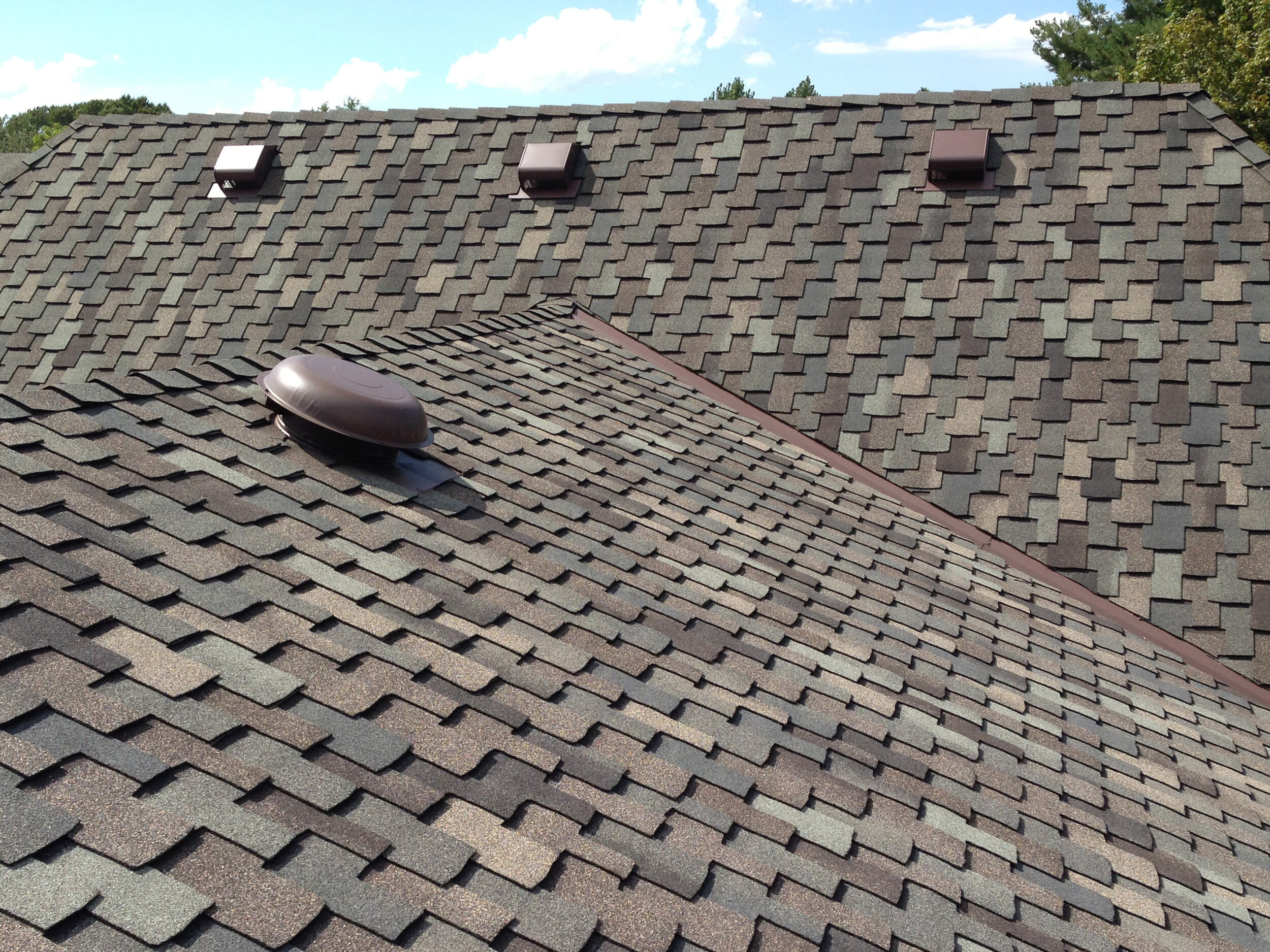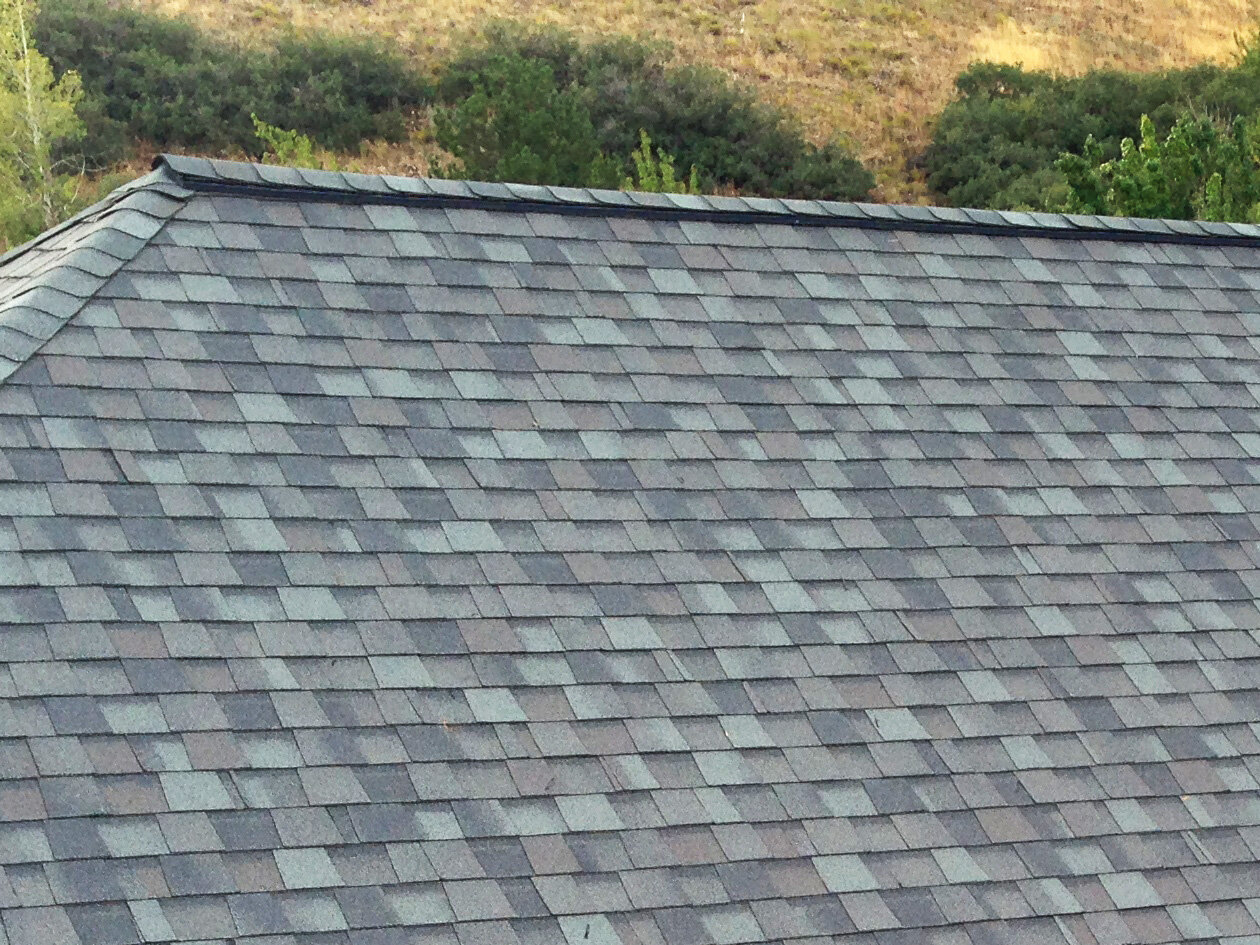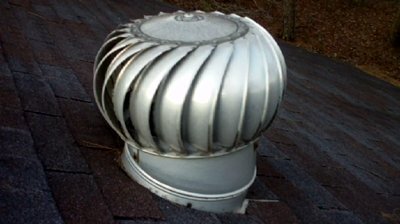What Vents do I have on my Roof?
Attic ventilation provides year-round benefits to reduce heat buildup in the summer, reduce moisture buildup,and prevent ice dams in the winter. It is also helpful to have the proper ventilation in order to prolong the life of the shingles and building materials.http://www.homeadvisor.com/article.show.5-Myths-about-Attic-Ventilation.16547.htmlDifferent vent styles have different ventilation capacity. Turtle vents (exhaust vent) rely on conventional airflow. Power vents suck the air out of the attic. Intake vents (installed in the soffit/under-eave or at the roof's bottom edge) are critical for new air to enter the attic.
The Four Most Common Exhaust Vents:
Turtle vents also known as Box Vents (near ridge)The Turtle vent is installed over a hole cut out of the roof. Utilizing natural convection, they create an opening for the rising hot air and moisture to escape through. Turtle Vents are most effective when installed within a couple feet of the roof ridge to allow the maximum amount of heat and moisture to be released. Due to their reliance upon convectional air flow, numerous Turtle Vents are often required. The redeeming quality about Turtle vents is they don’t have any electrical or mechanical parts that break down. Ridge ventRidge vent is one the most common on shingled residential buildings. Ridge vents is installed at the peak of a sloped roof which allows warm, humid air to escape through building's attic. It is recommended to have 1 square foot of ventilation along the ridge for every 300 square feet of attic floor space.
Ridge ventRidge vent is one the most common on shingled residential buildings. Ridge vents is installed at the peak of a sloped roof which allows warm, humid air to escape through building's attic. It is recommended to have 1 square foot of ventilation along the ridge for every 300 square feet of attic floor space. Calculate your roof ventilationhttp://www.owenscorning.com/roofing/accessories/ventilation/determine-your-requirements/Power VentPower vents forcibly exhaust heat or humidity from any attic. They work on a thermostat, which automatically turns the fan on when cooling is needed. Some models also have an extra feature called a humidistat that monitors the moisture level of the air. Power Vents can either be powered by electricity from the home’s power source, or by solar power.http://www.lomanco.com/power-ventsTurbine VentA non-electric alternative to ventilation, the Turbine Vent uses Mother Nature - wind and air pressure to suck out stale attic air. They do this with a series of specially curved vanes that spin as the wind passes through them. This pulls hot, humid air from the attic. If your wind speeds are minimal of 5 mph, Turbine Vents provide a low-cost ventilation alternative. The only down side to Turbine Vents are the ball bearing can wear out making a squeaking noise as it turns.
Calculate your roof ventilationhttp://www.owenscorning.com/roofing/accessories/ventilation/determine-your-requirements/Power VentPower vents forcibly exhaust heat or humidity from any attic. They work on a thermostat, which automatically turns the fan on when cooling is needed. Some models also have an extra feature called a humidistat that monitors the moisture level of the air. Power Vents can either be powered by electricity from the home’s power source, or by solar power.http://www.lomanco.com/power-ventsTurbine VentA non-electric alternative to ventilation, the Turbine Vent uses Mother Nature - wind and air pressure to suck out stale attic air. They do this with a series of specially curved vanes that spin as the wind passes through them. This pulls hot, humid air from the attic. If your wind speeds are minimal of 5 mph, Turbine Vents provide a low-cost ventilation alternative. The only down side to Turbine Vents are the ball bearing can wear out making a squeaking noise as it turns. If you have any questions about your ventilation system or would like to request a free estimate, feel free to give us a call 801-487-5151
If you have any questions about your ventilation system or would like to request a free estimate, feel free to give us a call 801-487-5151
